You’ve probably heard Costa Rica called paradise, but living in Costa Rica full-time reveals some tough realities. The cost of living in Costa Rica has jumped dramatically over the past 15 years, making it far more expensive than most people expect from Central America.
This guide exposes the dark side of living in Costa Rica through nine major challenges that catch many expats off guard. Get ready to discover what nobody talks about.
Key Takeaways
Costa Rica’s living costs rival Southern California with rent ranging $1,200-$3,000 monthly and groceries costing $300-$700 per month.
Tax residency triggers after 183 days annually, potentially subjecting expats to worldwide income taxation under Costa Rica’s complex system.
Government bureaucracy creates months-long delays for basic services, with residency applications requiring three years for permanent status.
Crime rates spike in tourist areas like Jaco and Tamarindo, while sophisticated scams specifically target foreign residents.
Poor road conditions and traffic congestion turn 20-minute drives into two-hour ordeals, especially during Costa Rica’s rainy season.
Table of Contents
Economic Challenges of Living in Costa Rica
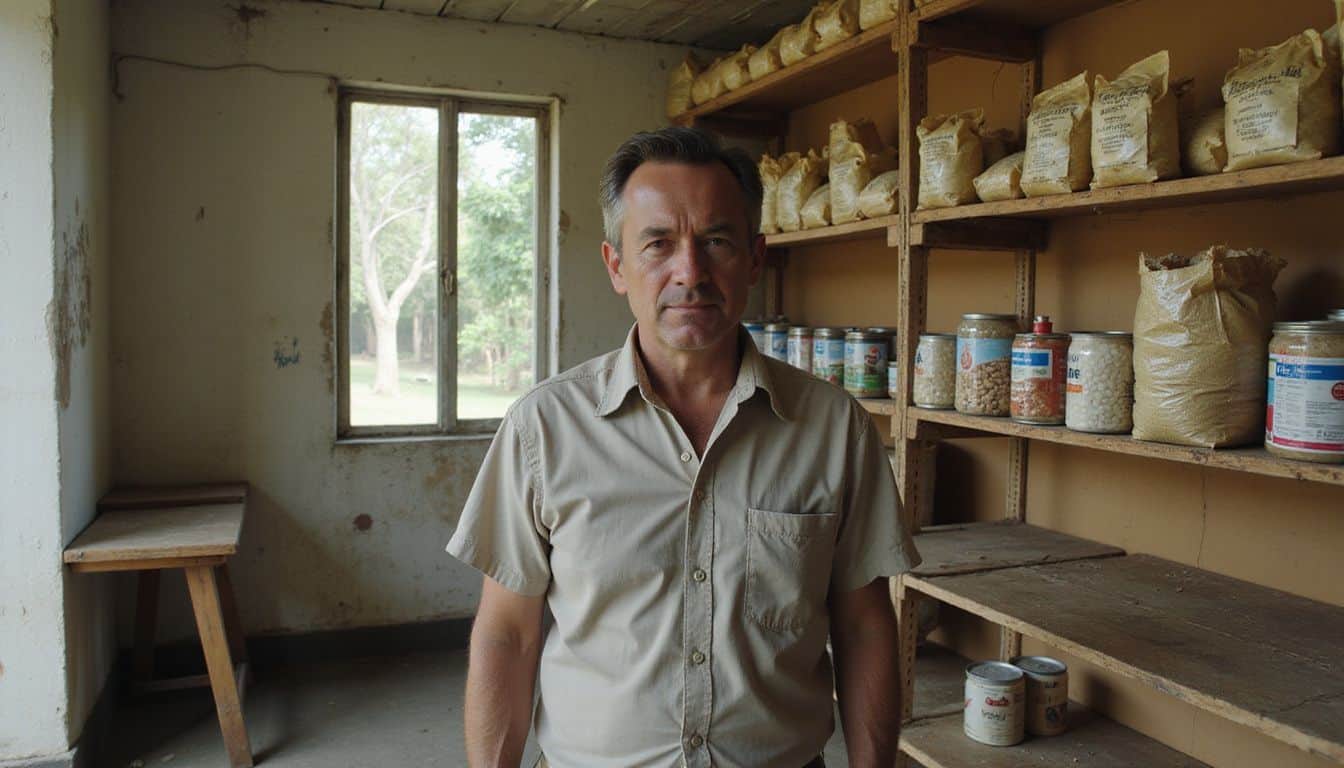
Costa Rica’s paradise image crumbles fast once you see the price tags on everything from groceries to rent. Your dollar stretches about as far as a wet paper towel here, with costs that rival Southern California but without the matching salaries.
Why is the cost of living high in Costa Rica?

Costa Rica’s high living costs stem from heavy import taxes and limited local production. Imported goods like electronics and vehicles cost 30-100% more than in the U.S. due to steep tariffs.
The country imports most manufactured items, creating a dependency that drives prices up across all sectors.
Real estate prices keep climbing because foreign demand outpaces local supply, especially in beach regions where one-bedroom apartments range from $1,200 to $3,000+ monthly. San José rentals cost $600 to $1,500+ per month, while grocery expenses hit $300 to $700 monthly depending on whether you buy local produce or imported brands.
The small domestic market can’t support large-scale manufacturing, forcing Costa Ricans to pay premium prices for basic necessities.
Living in paradise comes with a price tag that many expats don’t expect until they’re already there.
Before making the move, check out the best countries to immigrate to to compare your options.
What causes real estate prices to keep rising?

Increased demand from expatriates has created a sellers’ market for real estate in Costa Rica. Foreign buyers, including digital nomads and retirees, compete for limited properties in desirable areas.
This competition drives prices higher each year. Local Ticos often cannot afford homes in their own neighborhoods anymore. Housing costs for various types of accommodations have increased, reflecting the demand from international buyers who bring stronger currencies.
Homes under $250,000 are relatively affordable but may not meet expats’ expectations for modern amenities or prime locations. Many foreign buyers want properties near beaches, mountains, or the capital city of San Jose.
Limited land availability in these sought-after areas pushes prices even higher. Real estate investing has become attractive to wealthy foreigners seeking second homes or rental properties.
Property taxes remain low compared to other countries, making ownership appealing to international investors. The combination of foreign money and restricted land supply creates an upward price spiral that shows no signs of slowing.
Beyond rising property costs, Costa Rica’s complex tax system presents another major challenge for residents.
How are utility expenses increasing for residents?
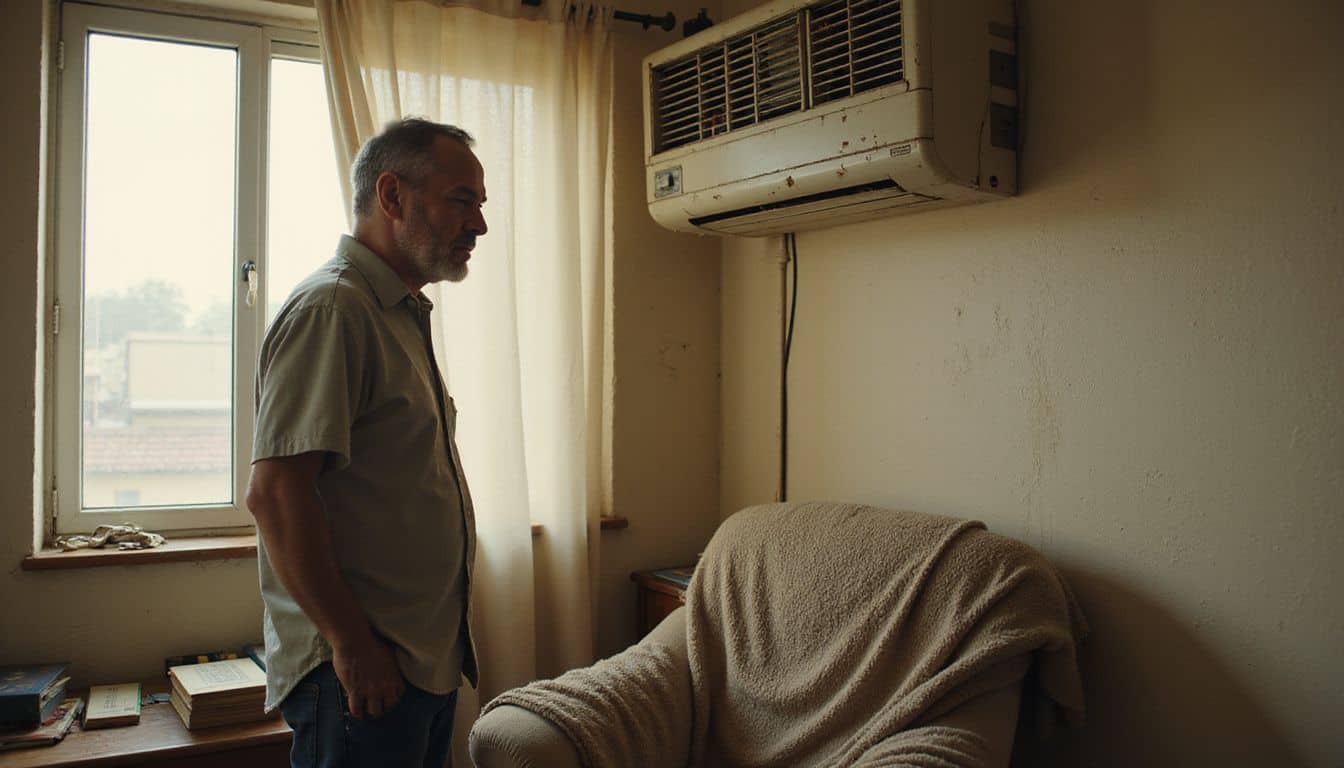
Utility costs in Costa Rica hit residents hard, with electricity bills ranging from $60 to $150 per month. Air conditioning drives these expenses through the roof during hot seasons.
Water bills stay relatively manageable at $10 to $25 monthly, but internet service adds another $30 to $85 to your budget. Energy-saving appliances help reduce consumption, yet many expats struggle with the sticker shock of their first few bills.
Tropical climate forces most residents to run cooling systems constantly, pushing electricity costs to the upper end of that range. Government subsidies for locals don’t extend to foreign residents, creating an uneven playing field.
Internet providers charge premium rates for reliable connections, especially in remote areas where infrastructure remains limited. These mounting utility expenses catch many newcomers off guard, adding hundreds of dollars to their monthly living costs compared to what they paid back home.
Tax Complications
 Costa Rica’s tax system can catch expats off guard with its intricate rules and unexpected obligations. Many newcomers discover they owe money to both their home country and Costa Rica, creating a financial maze that requires careful planning to navigate successfully.
Costa Rica’s tax system can catch expats off guard with its intricate rules and unexpected obligations. Many newcomers discover they owe money to both their home country and Costa Rica, creating a financial maze that requires careful planning to navigate successfully.
How complex is Costa Rica’s tax system?

Costa Rica’s tax system presents a maze of rules that can frustrate even experienced expats. Income taxes escalate from 0% to 25% for earnings and profit-making, creating multiple brackets that require careful calculation.
The territorial taxation system means foreign income stays untaxed, but proving what counts as “foreign” versus “local” income often requires professional help. My friend Jake spent three months sorting through paperwork just to understand which of his online business earnings qualified for tax exemption.
Tax residency rules add another layer of confusion to an already complex system. Staying in Costa Rica for 183+ days annually triggers tax resident status, but tracking those days accurately becomes crucial for compliance.
The tax code here changes faster than the weather in the mountains, and that’s saying something.
Many expats discover this requirement too late, facing unexpected tax obligations they never planned for. The 183-day minimum stay requirement catches newcomers off guard, especially those splitting time between countries.
Understanding these taxation rules becomes essential before exploring the bureaucracy that surrounds obtaining actual tax residency status.
What is the 183-day minimum stay requirement?

Costa Rica’s tax system creates a major trap for expats through its 183-day rule. Under Costa Rican tax law, an individual becomes a tax resident if they spend 183 days or more in the country within a calendar year.
This rule catches many people off guard, especially those who think they’re just visiting for extended periods. The days don’t need to be consecutive, which makes tracking even trickier.
Any part of a day counts as a full day toward the requirement, so arriving at 11 PM still counts as one complete day.
Tax residency brings serious obligations that most expats don’t expect. Once you hit that 183-day mark, Costa Rica can tax your worldwide income, not just what you earn locally. Keeping detailed records of entry and exit dates becomes essential to prove physical presence in Costa Rica.
Many guys I’ve met learned this lesson the hard way after casual border runs to Nicaragua or Panama. The taxation in costa rica system doesn’t mess around, and proving your days in or out of the country falls entirely on you.
Immigration stamps become your best friend, and losing track of your time can cost thousands in unexpected tax bills.
Why is obtaining tax residency difficult?

Getting tax residency in Costa Rica creates major headaches for most expats. You must spend over 183 days in the country each year, which sounds simple but proves tricky in practice.
The tax system in Costa Rica demands you prove your primary economic interests lie within their borders. This means showing bank accounts, investments, and business activities all center around Costa Rica rather than your home country.
Bureaucracy in Costa Rica makes the process even more complex. Officials require extensive paperwork, multiple visits to government offices, and lengthy waiting periods. You need to demonstrate ties to the local community, maintain detailed records of your time in the country, and navigate changing regulations.
Many expats discover the rules shift without warning, forcing them to restart applications or provide additional documentation. The permanent residency requirements add another layer of difficulty to this already challenging process.
Bureaucracy and Legal Issues

Costa Rica’s bureaucratic maze can turn simple tasks into months-long ordeals, with expats often finding themselves drowning in paperwork, facing endless office visits, and dealing with constantly changing laws that even local lawyers struggle to interpret.
Why are processes in Costa Rica lengthy and complex?

Costa Rica’s government operates at a pace that tests even the most patient expats. Slow government processes plague every aspect of expat life, from obtaining residency to opening basic bank accounts.
Bureaucrats require extensive documentation for the simplest tasks, and each office seems to demand different paperwork combinations. My friend spent eight months just getting his work permit approved, visiting three different government buildings weekly.
Expatriates face particular challenges with work permits, which involve multiple agencies that rarely communicate with each other. The residency application alone requires documents from your home country, all apostilled and translated by certified professionals.
Bank account opening turns into a months-long ordeal, with managers requesting proof of income, utility bills, and references that change based on which employee handles your case.
Laws shift frequently, and what worked for one expat may not work for the next person applying just weeks later.
What residency roadblocks do expats face?

Lengthy processes create just the beginning of your residency challenges. Expat communities face multiple roadblocks that can derail their plans for years.
Residency processes require at least three years of temporary residency for permanent status, which means you’re stuck in legal limbo longer than expected. Expats seeking residency through investment must purchase property valued over $250,000, a steep financial barrier that eliminates many applicants.
Documentation requirements change frequently, forcing you to restart applications with new paperwork. Immigration offices operate on “tica time,” where appointments get delayed for months without explanation.
Language barriers complicate every interaction since most officials speak only Spanish, leaving non-Spanish speakers dependent on expensive translators. My friend Jake spent two years collecting documents, only to discover new requirements had been added during his application process.
Fraudulent activities targeting expats include fake legal services that promise quick residency approvals but deliver nothing. Dual citizenship complications arise when your home country doesn’t recognize Costa Rica’s naturalization laws.
The 183-day minimum stay requirement forces you to maintain physical presence even when family emergencies arise back home.
The residency process in Costa Rica tests your patience more than your bank account, and that’s saying something.
How efficient are public services in Costa Rica?
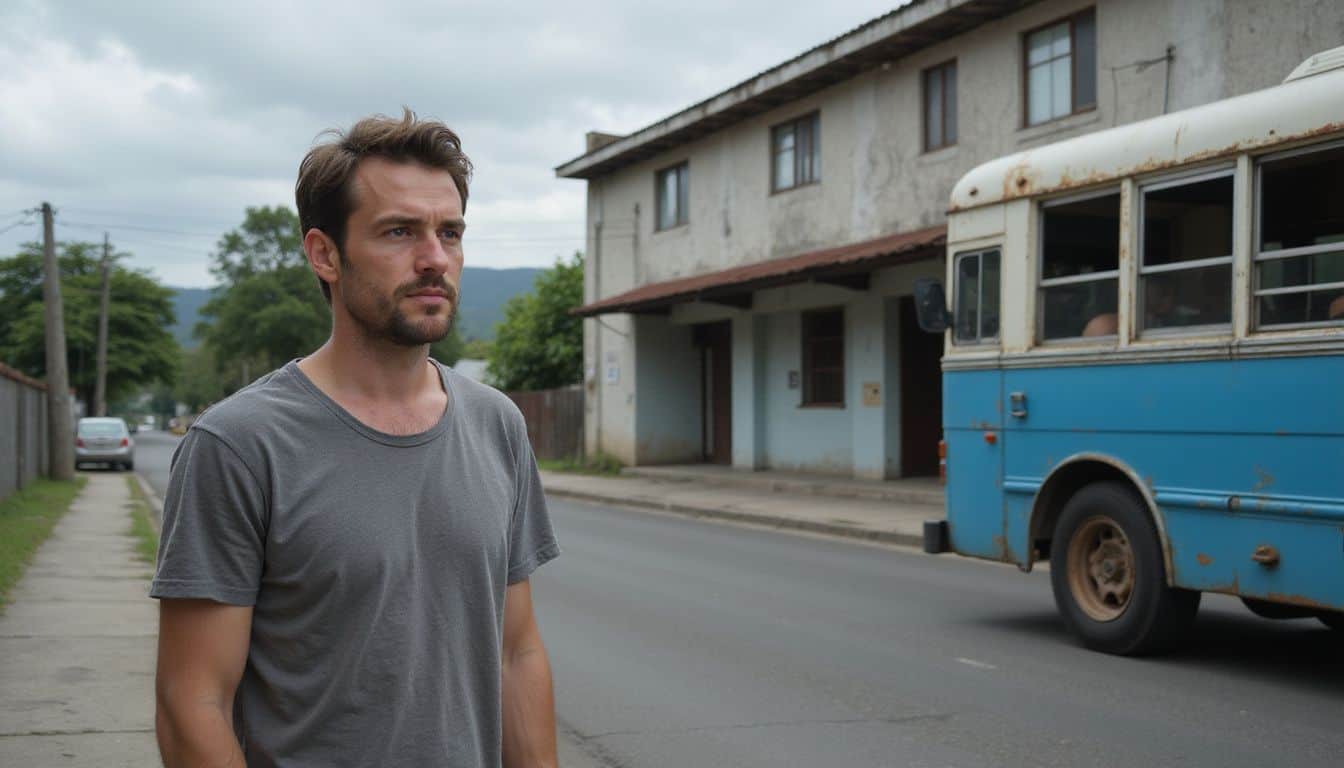
Public services in Costa Rica move at a snail’s pace, and the government bureaucracy makes simple tasks feel like climbing a mountain. Getting basic services like water, electricity, or internet connections can take weeks or even months due to endless paperwork and slow processing times.
The Costa Rican government is known for slow and confusing bureaucratic processes, particularly with residency applications, which creates massive delays for anyone trying to access essential services.
Roads remain in terrible condition across the country, making commute times unpredictable and frustrating for daily transport needs.
Government offices operate with outdated systems that require multiple visits to complete single transactions. Extensive documentation is required to open a local bank account, and this same pattern repeats across all public service departments.
Poor infrastructure, such as bad roads and inadequate public transportation, negatively impacts daily commuting and public service efficiency throughout the nation. Many expats discover that what should be simple one-day tasks stretch into weeks of back-and-forth visits to different offices, each demanding more forms and stamps.
Safety Concerns
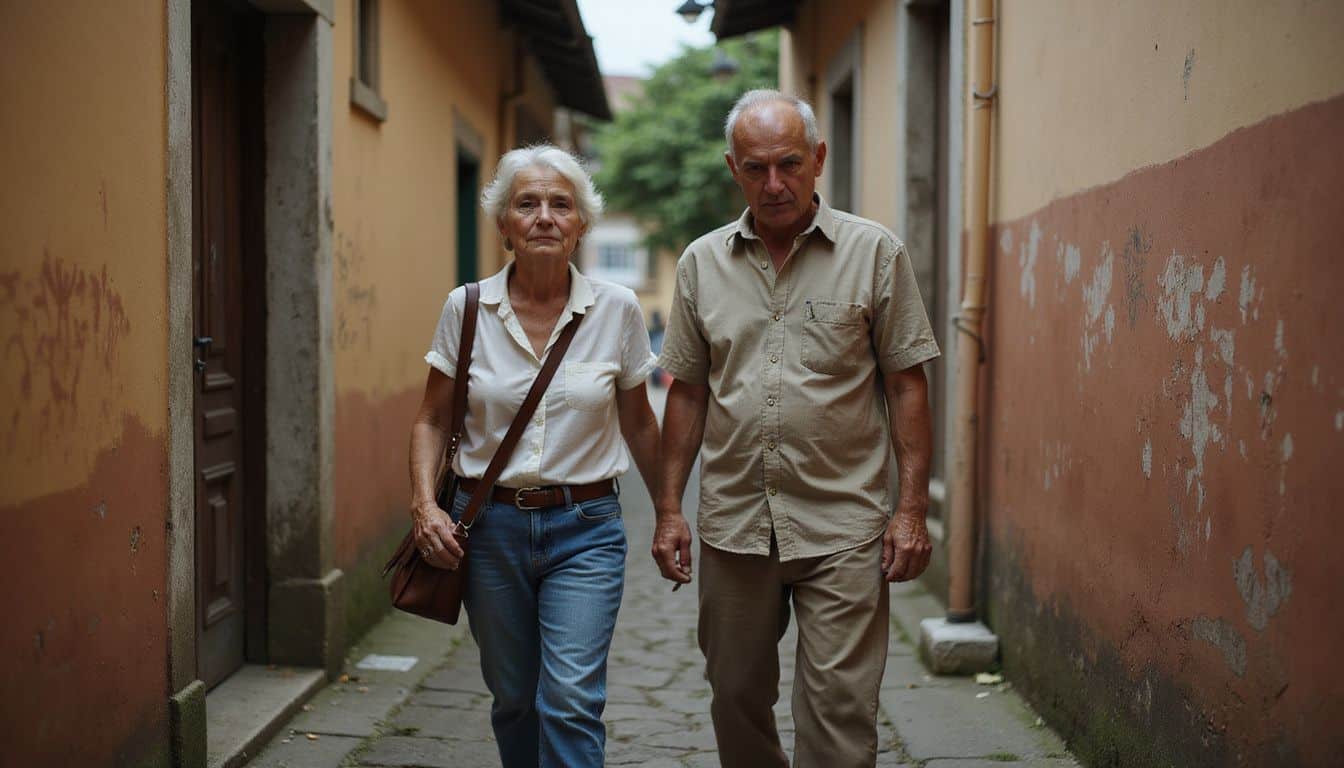
Costa Rica’s safety landscape presents real challenges that many expats discover too late. Crime rates spike in certain neighborhoods, while sophisticated scams specifically target foreign residents who lack local street smarts.
What are the crime rates like in certain areas?

Crime rates vary dramatically across Costa Rica, with certain areas posing serious risks to residents. Popular tourist destinations like Jaco, Tamarindo, and Puerto Viejo have become crime hotspots where theft, assault, and drug-related violence occur frequently.
San José presents the most concerning statistics, particularly in high-crime districts including San Sebastián, Los Guidos, and La Carpio where gang activity and petty crime plague daily life.
Violent crimes and homicides have surged post-pandemic, making safety concerns in Costa Rica a real issue for expats and locals alike.
Scams in Costa Rica specifically target foreigners who may not understand local warning signs or criminal tactics. Remote areas outside major cities often lack adequate police presence, leaving residents vulnerable to break-ins, robbery, and other criminal activities that go unreported or unresolved.
How do scams target expats in Costa Rica?
Scammers in Costa Rica specifically target expats because they view foreigners as easy marks with money. Real estate fraud ranks as one of the most common schemes, where criminals pose as property owners or agents to steal deposits from unsuspecting buyers.
These fraudsters often target men who are looking to invest in vacation homes or rental properties. ATM skimming operations also focus heavily on tourist areas and expat communities, with criminals installing devices that steal card information from foreign bank accounts.
Local businesses frequently overcharge expats for services, knowing that many foreigners don’t understand local pricing or feel uncomfortable negotiating.
Language barriers make expats particularly vulnerable to these schemes since they can’t fully understand the details of contracts or verbal agreements. Scammers exploit this weakness by speaking quickly in Spanish or using complex legal terms that confuse non-native speakers.
Many expats have shared stories of signing documents they didn’t fully comprehend, only to discover later they were victims of fraud. The pura vida culture can also work against foreigners, as the relaxed atmosphere makes people drop their guard and trust too easily.
Criminals know that expats often carry more cash than locals and may not be familiar with common warning signs of scams that Costa Ricans would immediately recognize.
Are remote regions safe to live in?
Remote regions in Costa Rica present mixed safety scenarios that require careful consideration. Crime rates tend to be lower in isolated mountain communities and rural farming areas compared to tourist hotspots like Tamarindo.
Most violent incidents occur in urban centers, while remote locations face different challenges. Wildlife encounters become more common in these areas, especially near national parks and conservation zones.
Landslides pose serious risks during the rainy season, particularly in mountainous regions with poor road access.
Rural communities often lack proper police presence, meaning response times stretch for hours during emergencies. Medical clinics remain scarce in remote areas, forcing residents to travel long distances for healthcare.
Communication networks frequently fail during tropical storms, leaving isolated communities cut off from outside help. Deforestation in some remote regions has increased the risk of flooding and soil erosion.
Many expats find these areas peaceful but discover they must become more self-reliant for basic safety and security needs.
Infrastructure Problems

Costa Rica’s roads tell a different story than the tourism brochures… many highways crumble under heavy rainfall, and potholes become small lakes during the wet season. Traffic congestion chokes major cities like San José, where a 20-minute drive can stretch into two hours, testing even the most patient drivers.
Why are road conditions poor in Costa Rica?
Costa Rica’s infrastructure remains underdeveloped compared to Western countries, creating daily challenges for drivers. Roads often have potholes that damage vehicles and make travel uncomfortable.
Many highways lack proper maintenance, leaving surfaces cracked and uneven. The government struggles to keep up with repairs due to limited budgets and competing priorities.
Conditions worsen during the wet season due to flooding and landslides that block major routes. Rainfall creates additional problems as water pools in damaged areas, making potholes deeper.
The mountainous terrain makes road construction expensive and difficult. Traffic congestion in urban areas puts extra stress on already weak road surfaces, accelerating wear and tear throughout the country.
How bad is traffic congestion in urban areas?
Traffic congestion in Costa Rica’s urban areas creates a daily nightmare for residents. San José, the capital city, suffers from gridlock that stretches commuting times far beyond reasonable limits.
Poorly maintained roads with potholes affect traffic flow, especially during heavy rains. These damaged surfaces force drivers to slow down significantly, creating bottlenecks throughout the city.
Commuting times can be significantly longer due to inadequate road conditions.
Traffic congestion is exacerbated by slow buses and expensive taxi services. Public buses crawl through streets at frustrating speeds, blocking faster-moving vehicles behind them. Taxi fares remain costly, pushing more people toward personal vehicles and worsening the jam.
Rush hour transforms simple 20-minute trips into hour-long ordeals. The combination of poor infrastructure, limited public transport options, and growing vehicle numbers creates a perfect storm of urban mobility chaos.
What public transportation options are available?
Beyond the traffic jams, getting around Costa Rica presents its own set of challenges. Costa Rica’s public transportation is slow and infrastructure is underdeveloped, making daily commutes frustrating for residents.
Bus systems connect major cities, but they run on unpredictable schedules. Routes often take twice as long as driving would. Taxis can overcharge, creating issues for travelers who don’t know local rates.
Many drivers inflate prices for foreigners, especially those who don’t speak Spanish fluently. A four-wheel-drive vehicle is recommended for those living outside urban centers, since rural roads lack proper maintenance and become impassable during rainy seasons.
Environmental and Natural Risks

Costa Rica’s stunning nature comes with serious environmental risks that catch many expats off guard… from volcanic eruptions at Poás Volcano to extreme weather events like Hurricane Nate, plus ongoing environmental degradation due to climate change that threatens the country’s ecological integrity and creates unpredictable living conditions you need to understand before making the move.
How unpredictable is the weather in Costa Rica?
Costa Rica’s weather patterns change without warning, making daily planning difficult for residents. The rainy season from May to November brings sudden downpours that can flood roads and disrupt travel plans.
Extreme weather events strike with little notice, forcing people to adapt quickly to changing conditions. Minor earthquakes happen regularly throughout the year, adding another layer of unpredictability to daily life.
The dry season from December to April creates its own set of problems, especially in Guanacaste where water shortages become common. Temperatures soar to uncomfortable levels during these months, straining power grids as residents rely heavily on air conditioning.
Due to climate change, these weather patterns have become even more erratic in recent years. Volcanic activity from places like Poás Volcano can also affect local weather conditions, creating sudden temperature drops or ash-filled skies that disrupt outdoor activities.
What natural disasters pose risks?
Unpredictable weather patterns often signal bigger threats ahead. This seismically active nation sits in a zone where the earth moves regularly, creating constant tension beneath your feet.
Earthquakes shake the ground frequently, with minor tremors happening almost weekly in some regions. Most residents barely notice these small quakes anymore, but larger ones can damage buildings and disrupt daily life for weeks.
The rainy season from May to November brings flooding that turns streets into rivers and triggers dangerous landslides on mountain roads. Hurricanes rarely make direct hits, but tropical storms hundreds of miles away still dump massive amounts of rain and create destructive winds.
My neighbor lost his roof during a storm that wasn’t even supposed to affect our area, proving that distance doesn’t always mean safety. These natural disasters test your preparedness and patience, especially when you’re far from family back home.
How does deforestation affect the environment?
Deforestation destroys Costa Rica’s rich biodiversity at an alarming rate. Forest clearing eliminates habitats for countless species, pushing many animals toward extinction. The country loses precious ecosystems that took centuries to develop.
Trees that once stored carbon dioxide now release it back into the atmosphere, worsening climate change. Soil erosion becomes a major problem after loggers remove protective tree cover.
Rain washes away fertile topsoil, leaving barren land behind.
Government efforts to stop forest destruction continue, but damage keeps happening across the nation. Flooding increases dramatically in areas where trees once absorbed rainwater. Rivers carry more sediment downstream, affecting water quality for communities.
The environment suffers long-term consequences that impact both wildlife and human populations. Climate patterns shift as forests disappear, creating unpredictable weather conditions.
Costa Rica’s reputation for sustainable practices faces serious challenges from ongoing habitat destruction.
Cultural and Language Barriers

Moving to Costa Rica means adjusting to a completely different rhythm of life, where “Tico time” runs slower than most expats expect. Learning Spanish becomes essential for daily survival, as many locals speak limited English…
and without it, you’ll find yourself isolated from the rich local culture that includes everything from sharing gallo pinto at breakfast to understanding the subtle social norms that govern Costa Rican society.
How to adapt to the local pace of life?
Costa Rica operates on “Tico time,” where everything moves slower than most expats expect. Meetings start late, government offices process paperwork at a crawl, and rushing rarely speeds things up.
Adjusting to a slower pace of life is a significant shift for newcomers from fast-paced environments, especially those used to instant responses and quick decisions. Local customs prioritize relationships over schedules, so grabbing coffee with neighbors matters more than checking off tasks.
Embracing slower pace, different customs, or frugal lifestyles can be a challenge for men who built careers around efficiency and deadlines.
Patience becomes your most valuable tool here. Learning Spanish helps you connect with locals who appreciate the effort, even if your grammar stumbles. The decision to remain in Costa Rica or return home often involves weighing the adaptation to the local lifestyle against personal preferences and social connections.
Start your mornings with gallo pinto at local sodas instead of rushing to chain restaurants. Join community events, play soccer with locals, and accept that some days you’ll accomplish less but enjoy more meaningful conversations.
What communication challenges do non-Spanish speakers face?
Living in Costa Rica without Spanish skills creates daily hurdles that most expats underestimate. Most locals outside tourist areas do not speak English, making simple tasks like grocery shopping, banking, or visiting the doctor frustrating experiences.
Restaurant menus, government forms, and street signs appear only in Spanish. Phone calls to service providers become impossible without translation help. Even basic conversations with neighbors, mechanics, or store clerks require gestures and broken phrases that often lead to misunderstandings.
Spanish proficiency enhances daily interactions and cultural immersion beyond what many realize. Learning Spanish and regional expressions is crucial for adapting to Costa Rican life, especially since Ticos use unique slang and speak faster than textbook Spanish.
Banking procedures, tax planning discussions, and legal matters become nearly impossible without fluency. Medical appointments turn stressful since doctors rarely speak English outside private clinics in San José.
Social isolation hits hard when you can’t join conversations at local bars, community events, or neighborhood gatherings. Professional opportunities shrink dramatically since most jobs require bilingual skills, limiting career growth for those who rely solely on English.
How difficult is it to integrate into local communities?
Communication barriers create just the first layer of challenges for expats trying to build meaningful connections in Costa Rica. Expats often remain outsiders despite efforts to integrate, facing social circles that can feel impenetrable even after years of residence.
Local communities operate on deep family ties and generational friendships that stretch back decades, making it tough for newcomers to find their place. The cultural pace moves slower than what most Americans expect, and rushing social connections often backfires.
Building genuine relationships requires patience and consistent effort that many underestimate. Effective communication is essential for daily life and cultural integration, but speaking Spanish fluently doesn’t guarantee acceptance into tight-knit neighborhood groups.
Engaging with the expat community and bilingual residents can ease the integration process, though this approach sometimes creates a bubble that prevents deeper local connections. Many expats find themselves caught between two worlds, never fully belonging to either the international community or the Costa Rican one.
Healthcare Challenges
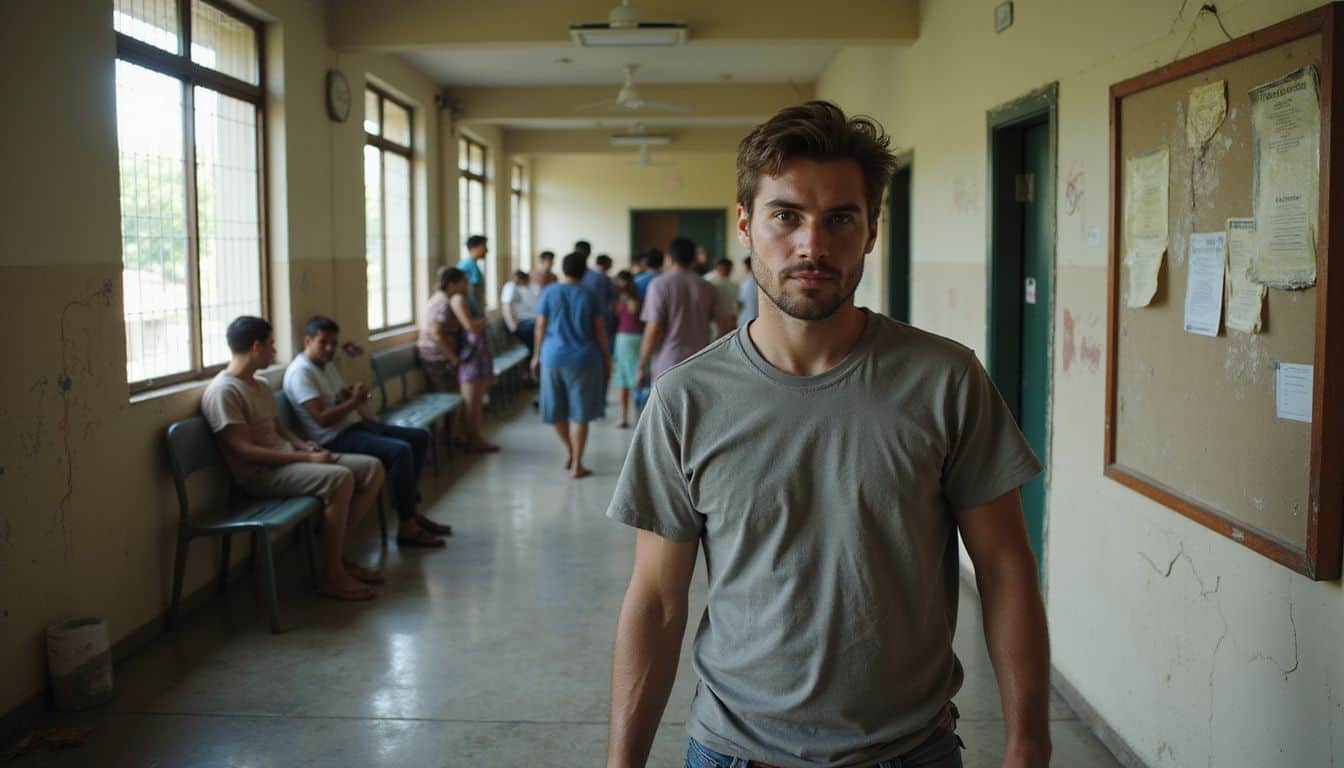
Costa Rica’s healthcare system creates serious problems for expats who expect quick, quality medical care. Public hospitals face massive overcrowding, while private healthcare costs drain your wallet faster than you’d expect.
How accessible is quality healthcare?
Costa Rica boasts some of the best healthcare in Latin America, mixing public and private systems that serve both locals and expats. Quality varies significantly by hospital and region, which directly impacts newcomers’ experiences when they need medical care.
Public hospitals in San José offer excellent specialists, while rural clinics might lack advanced equipment or English-speaking staff. Private facilities typically provide faster service and better amenities, but they come with higher price tags that many expats find surprising.
Monthly healthcare costs range from $60 to $250, depending on your age and existing health conditions. Expats over 50 often pay premium rates through private insurance plans, while younger residents can access affordable public coverage through the Caja system.
Rural areas present unique challenges, as emergency response times stretch longer and specialized treatments require trips to major cities. Many American retirees discover that their social security benefits don’t cover all medical expenses, especially for procedures requiring private care or medications not available through the public system.
What strains exist on the public healthcare system?
While Costa Rica’s healthcare system looks good on paper, the reality tells a different story. Public hospitals struggle with serious overcrowding that makes getting care feel like a battle.
Long wait times have become the norm, not the exception, and many expatriates find this frustrating after moving from countries with faster service.
The pandemic made everything worse by creating lengthy waiting lists for routine care. Staffing shortages hit rural areas especially hard, showing just how difficult it is to recruit qualified medical professionals.
My friend Jake waited eight months for a simple knee surgery at a public hospital in San José, something that would have taken weeks back in the States. These recruitment challenges mean fewer doctors and nurses are available to handle the growing demand from both locals and the expanding expat community.
Why is private healthcare costly?
Private healthcare in Costa Rica costs more than many expats expect, despite being cheaper than U.S. rates. Monthly private health insurance runs $100 to $400 per person, which adds up fast for families.
Private doctors charge around $60 per visit, but specialists and procedures push costs higher. Many facilities target wealthy foreigners and charge premium rates for English-speaking staff and modern equipment.
The system creates a two-tier structure where locals use public healthcare and expats pay private rates. Private hospitals import expensive medical equipment and medications, driving up operational costs.
Staff training for international standards also increases expenses. Golden visa holders and those with dual nationality often face higher premiums because insurance companies view them as temporary residents who might leave without paying bills.
People Also Ask
How do international tax rules affect Costa Rica residents?
Costa Rica has complex international tax laws that can surprise expats. The country doesn’t offer flat-tax systems or non-dom status like other nations. You’ll face value-added tax on many purchases, and navigating these rules without proper guidance can be costly.
Does Costa Rica offer citizenship by investment programs?
No, Costa Rica doesn’t have citizenship by investment programs or golden visas like many other countries. You can’t buy your way to citizenship here. The traditional residency path takes years and requires meeting specific requirements.
What environmental challenges does Costa Rica face despite its green image?
Costa Rica struggles with waste management and pollution in tourist areas. While the country focuses on decarbonizing its energy sector, rapid development threatens wildlife habitats. Local infrastructure often can’t handle the growing population and tourism demands.
How does the local cuisine affect daily living?
The local cuisine can be quite limited and repetitive for long-term residents. Many expats find themselves missing variety from their home countries. Fresh ingredients are available, but dining options outside major cities remain basic.
References
https://globalwealthprotection.com/the-dark-side-of-living-in-costa-rica/ (2025-02-28)
https://ticotimes.net/2022/05/26/why-is-the-cost-of-living-so-high-in-costa-rica (2022-05-26)
https://offshore-freedom.com/blog-articles/the-dark-side-of-living-in-costa-rica-for-expats/
https://www.unbiased.com/discover/banking/what-is-the-cost-of-living-in-costa-rica
https://quatro.legal/costa-rica-183-day-tax-residency-rule/
https://www.allworld.com/the-dark-side-of-living-in-costa-rica/ (2025-06-17)
https://cronkitenews.azpbs.org/2024/10/18/costa-rica-face-record-breaking-levels-crime-tourists/ (2024-10-18)
https://ticotimes.net/2025/04/30/costa-ricas-transportation-infrastructure-strains-under-growing-demand (2025-04-30)
https://climateknowledgeportal.worldbank.org/country/costa-rica/vulnerability
https://en.wikipedia.org/wiki/Deforestation_in_Costa_Rica
https://crie.cr/language-barrier-in-costa-rica/ (2024-06-24)
https://crie.cr/costa-rica-immigration-language-barrier/
https://internationalliving.com/countries/costa-rica/health-care/
https://www.exemplars.health/emerging-topics/ecr/costa-rica/challenges

